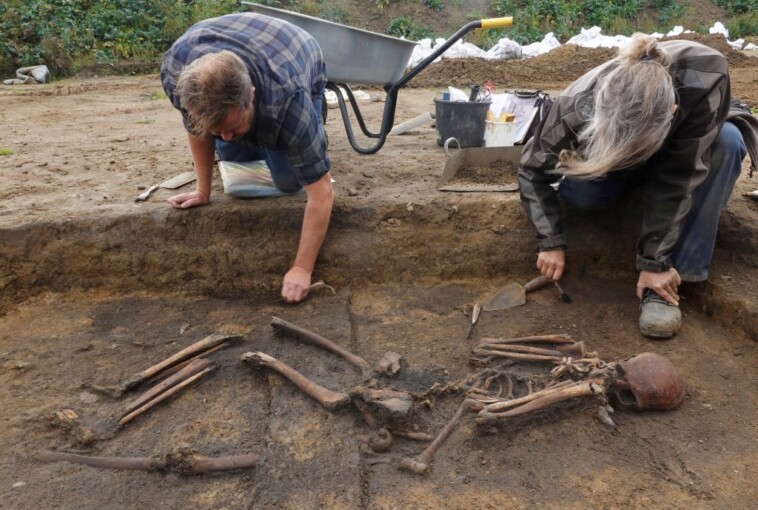Fifty “exceptionally well-preserved” Viking skeletons have been unearthed in Denmark by archaeologists from the Museum Odense, west of Copenhagen, along with five cremated graves.
“It is truly unusual to find so many well-preserved skeletons at once, like those discovered in Åsum,” museum curator Michael Borre Lundø said in a statement. “This discovery offers extraordinary opportunities to perform a wide range of scientific analyses, which can reveal more about the general health, diet, and origins of those buried. The analyses might even reveal whether the buried vikings were related, which would be particularly significant, as this has never been examined in similar graves.”
The skeletons were found in the Danish village of Åsum not far from Odense, Denmark, over the past six months and were buried with artifacts from outside the country, proving that they traveled internationally for trade, according to the museum.
“The graves in Åsum are so well-preserved that it may be possible, for the first time, to conduct special aDNA analyses on most of the skeletons—meaning DNA analyses on ancient material,” Sarah Croix, associate professor and PhD from the Department of Archaeology and Heritage Studies at Aarhus University, said in a statement. “It will be incredibly exciting to learn where these people came from and whether the same families were buried here across multiple generations.”
High water levels and good soil conditions kept the skeletons from decomposing, Lundø said.
“Normally when we excavate Viking graves, we’d be lucky if there were two teeth left in the grave besides the grave goods,” he explained, “but here we have the skeletons fully preserved. The skeletons are so amazing. They are so well preserved. There are five fingers, five toes. And that opens up a whole new set of possibilities for discoveries.”
Some of the skeletons were buried with items such as knives, brooches, glass pearls and even a wagon.
“The woman was buried in the wagon she likely traveled in,” Lundø said. “We must imagine that she was buried with her finest clothes and belongings. She was given a beautiful glass bead necklace, an iron key, a knife with a silver-threaded handle, and, most notably, a small shard of glass that may have served as an amulet. At the foot of the wagon, there was a finely decorated wooden chest, the contents of which we still do not know.”
Another grave next to the woman’s contained a bronze three-lobed brooch, a red glass, an iron knife, and a small piece of rock crystal, which Lundø noted isn’t natural to Denmark. He said it was likely imported from Norway.
“Several items from the many graves in Åsum indicate that the buried Vikings were connected to international trade networks that developed during the Viking Age,” he said.
The excavation took place in preparation for renovating an electrical grid.
While those graves were for high status individuals, the majority of skeletons belonged to a community of farmers, the museum said.
The burial ground covers around 2,000 square meters east of Odense and is believed to be from the 9th and 10th centuries.
Reuters contributed to this report.









